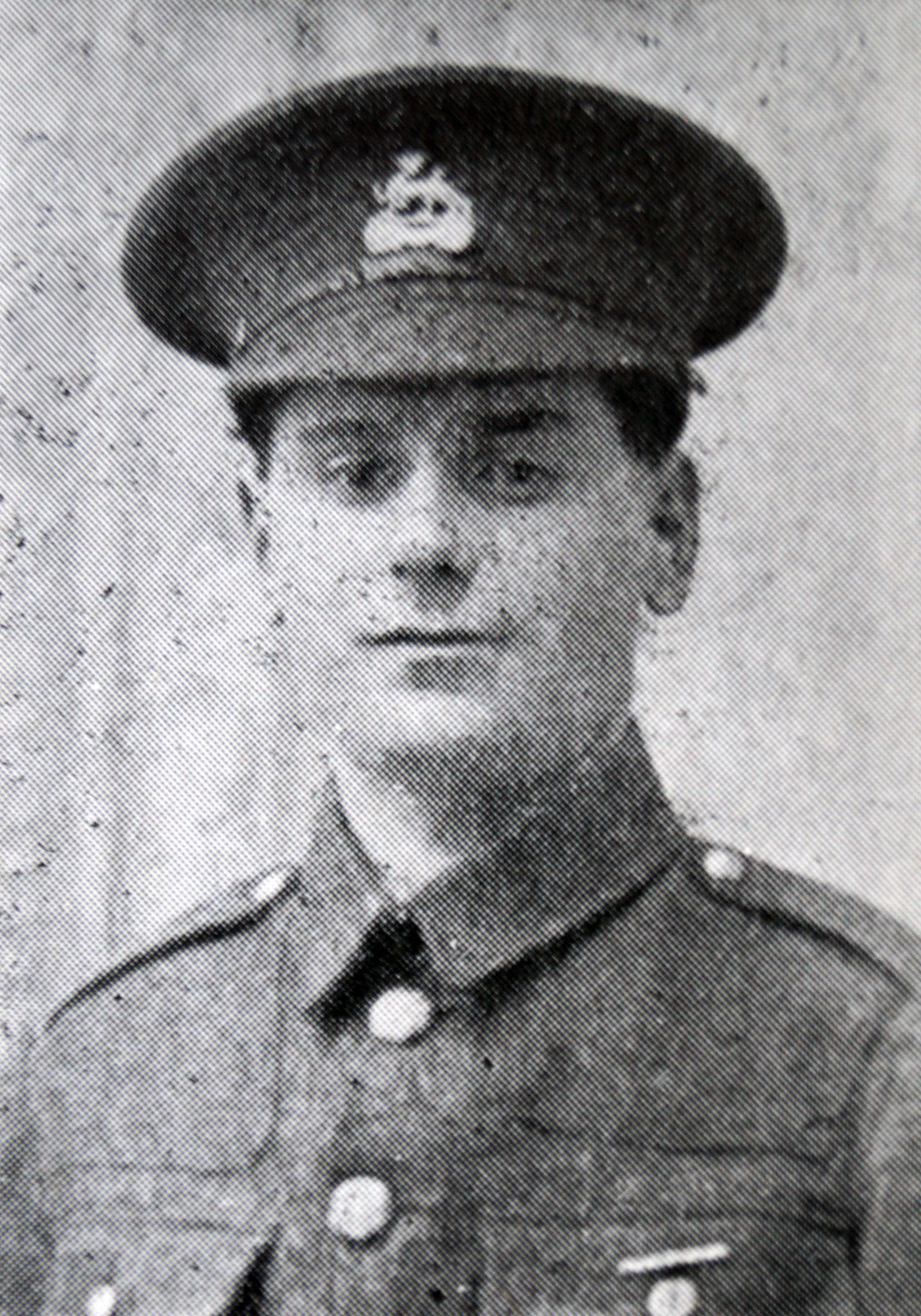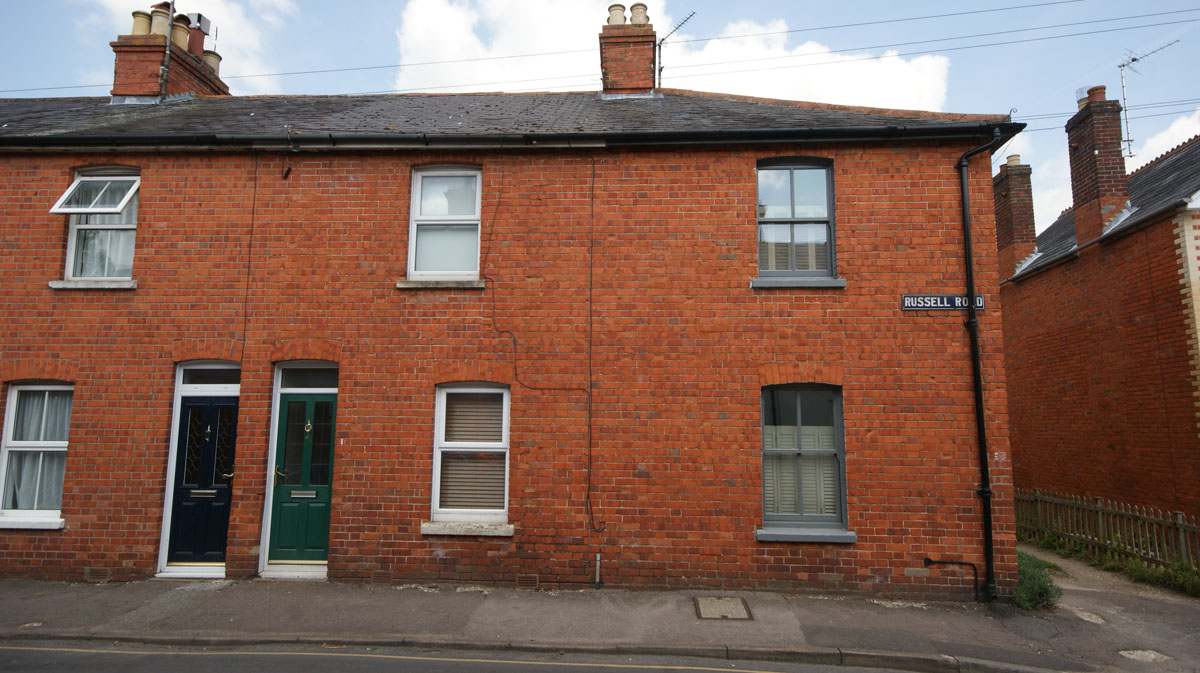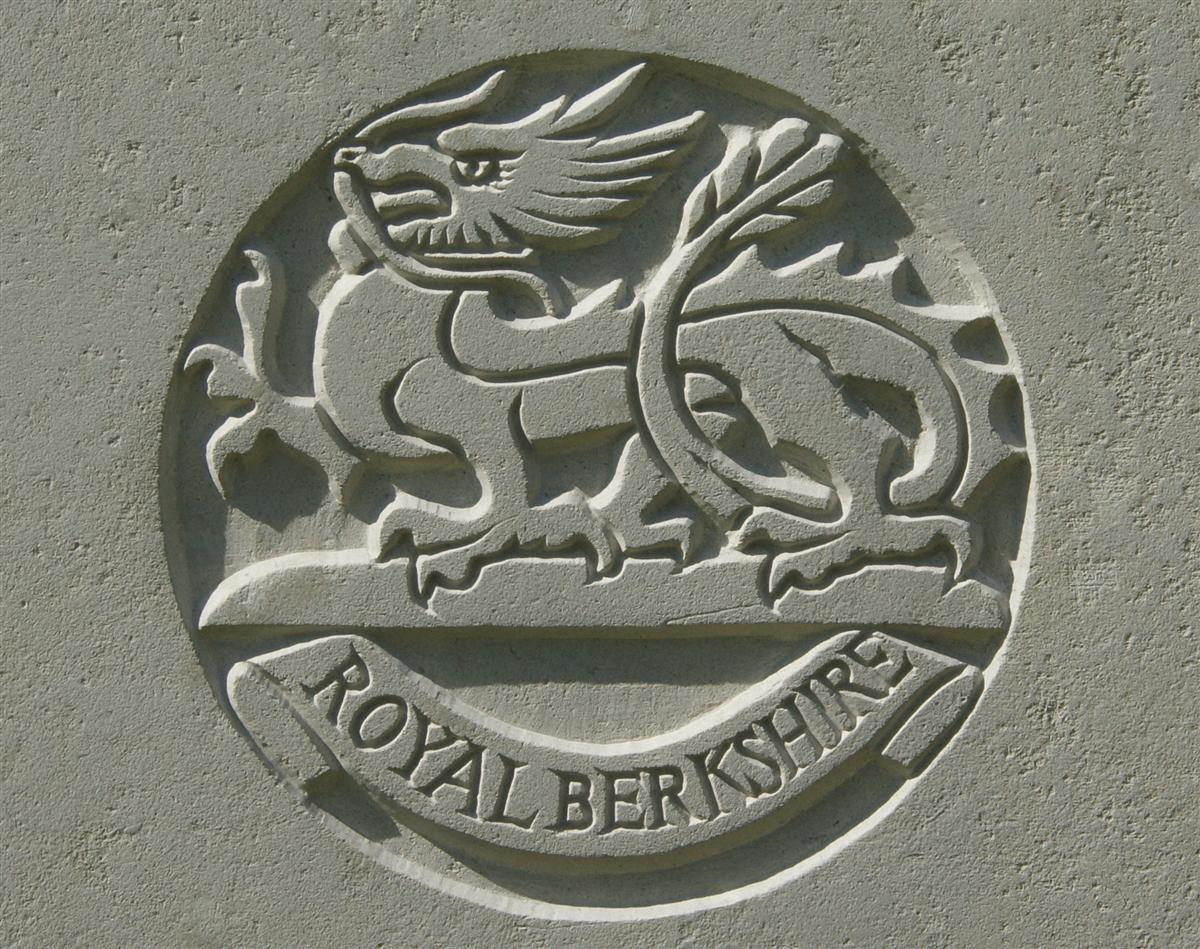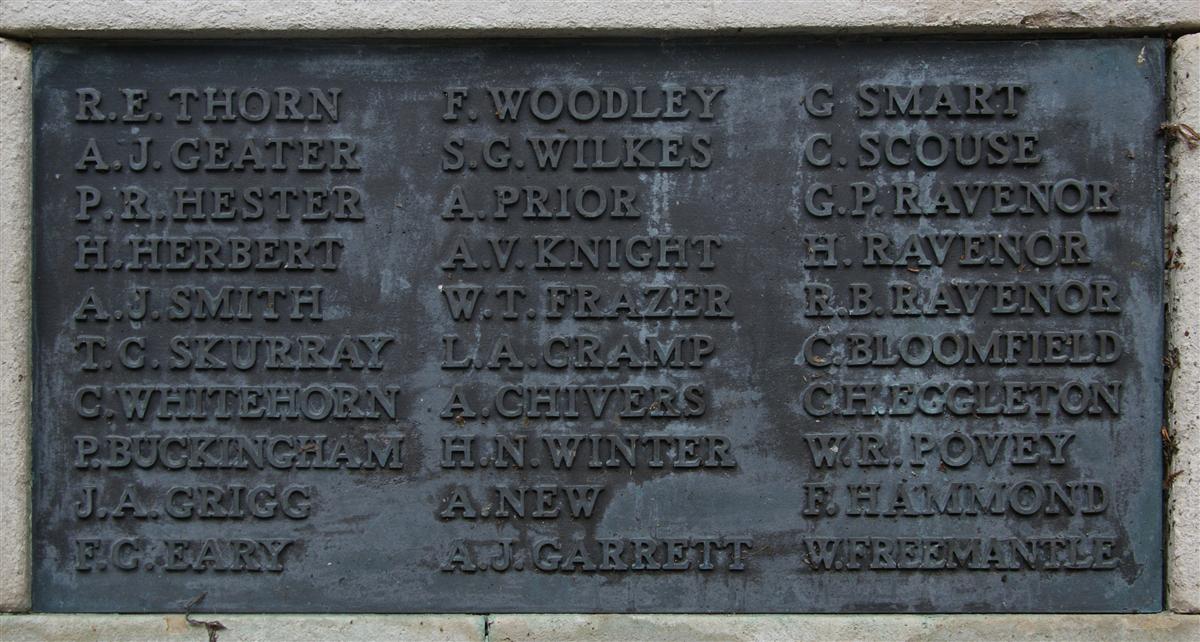Alfred James Geater
Private 201356 Alfred James Geater, 1/4th Battalion, Royal Berkshire Regiment

Alfred Geater |
At the time the 1901 cenus was taken the family were scattered: the eldest child, Edwin aged 13, was already working as a grocer’s assistant (probably an errand boy) and was boarding with Ellen Smith (a widow) and her three children at 6 Hereford Place, Bartholomew Street; Elizabeth, aged 12, known as Lizzie was an ‘inmate’ at the Servants’ Training Home in Kennet Road – the term ‘inmate’ suggests that this may have been a small scale ‘industrial school’ – a school to which delinquent youngsters could be sent to by magistrates who determined that a custodial sentence was appropriate punishment for whatever misdemeanour the child had committed; Albert, aged 10, was boarding with Alfred Perris and his family in Old Newtown Road; Edith (7) and Winifred (5) were boarding with Thomas Cook and his family at 2 Vine Cottages (off Bartholomew Street); Daisy was a ‘visitor’ at the home of John New, the Boat House, West Mills; the youngest sibling, 8 month old Thomas, was also a ‘visitor’, in his case with Thomas Goatley and his family in Riverside Cottages (better known was the Weavers’ Cottages) in West Mills.

41 Russell Road (2 Wellington Terrace in Alfred's time) - with the green door. This was the home of Alfred's foster parents Edwin and Sarah Ann Perris. |
When war broke out in 1914 Albert was not one of the hundreds of thousands of young men who joined up in the opening months of the hostilities, he did not volunteer until August 1915, when he left his job with Nichols & Son (printers and stationers in Wantage) and joined the local Territorials (4th Battalion, Royal Berkshire Regiment). By this time the reality of modern warfare had become apparent, he was not volunteering for a war that would be over by Christmas; volunteers in mid-1915 had a good idea of what they would be facing.

The regimental badge of the Berkshire Regiment, as used on CWGC headstones. |
Upon completion of his training Albert would have been ‘drafted’ to France to join the 1/4th Battalion. As training took around six months this could have occurred at any time from March 1916.
The 1/4th Battalion was a part of the 145th Brigade in the 48th (South Midland) Division. In July 1917 the division was in XVIII Corps, Fifth Army.
On 31 July 1917 Fifth Army (General Hubert Gough) launched an offensive known as the Battle of Pilckem Ridge – the opening of the 3rd Battle of Ypres – better known as Passchendaele. On 16 August a second attack, the Battle of Langemarck, commenced. The aim of the attack was to advance towards the Paschendaele ridge, however, a smaller attack a few days earlier had failed to capture the Gheluvelt ridge, from which the German overlooked the ground British troops would be attacking. Many are of the opinion that Gough should have postponed his assault until his flank had been secured though the capture of the Gheluvelt ridge. However, Gough’s only response was to delay the attack by two days (it was originally planned for 14 August).
When it the official history of the war was complied it was the 145th Brigade’s activities on 16 August that dominated XVIII Corps contribution to the battle:
Offical History of the Great War – Military Operations France and Belgium, 1917 vol II p199
The 48th and 11th Divisions of the XVIII Corps (Lt Gen Sir Ivor Maxse) each assaulted with one brigade, the remaining brigades being in reserve behind either flank. Eight tanks, allotted to assist, had been warned not to use the roads owing to the congestion of traffic; but an approach march across country was impracticable owing to the soft nature of the ground, and the order for their co-operation was cancelled. The 145th Brigade (Br-Gen D M Watt) of the 48th (South Midland Division) (Maj-Gen R Fanshawe), had a hard fight to overcome a strongpoint in the most northerly house of St Julien, where forty Germans and a machine gun were captured; the advance then met a heavy cross fire as the leading wave topped the rise of ground about two hundred yards east of the Steenbeek. This opposition came from machine guns in intact strongpoints at Hillock Farm and Maison de Hibou, a coule of hundred yards ahead, and further attempts to advance only resulted in additional casualties. Small parties were seen to reach Springfield Farm, near the objective; but none of the men returned.
The 1/4th Royal Berks were stopped by the machine gun fire from Maison de Hibou, suffering severe losses (65 killed, 4 missing and 105 wounded). Albert was one of the four men reported missing.
The odds were that missing men were dead, though a small proportion would turn up as prisoners. Often families had months of hope and dread before the notification finally arrived from the War Office that their father, son, brother had been officially presumed dead. However, Alfred’s family did not have to wait for long, confirmation of his death arrived after only a couple of weeks. Perhaps a comrade saw him fall, perhaps a patrol into no-man’s land stumbled across his remains?
Newbury Weekly News, 11 October 1917 – Local War Notes
Pte Albert Geater, of the Royal Berks Regt, reported missing three weeks ago, is now officially notified as being killed in action on August 16th. He was 26 years of age, and was a printer employed in a Newbury office. He was a fatherless boy brought-up by Mrs Perris of 2, Wellington-terrace, West-fields.

Albert's name on Newbury War Memorial (bottom centre) |
Locally Albert is remembered on tablet 12 of the Newbury Town War Memorial as well as the memorial board and roll of honour in St Nicolas’ Church, Newbury.

